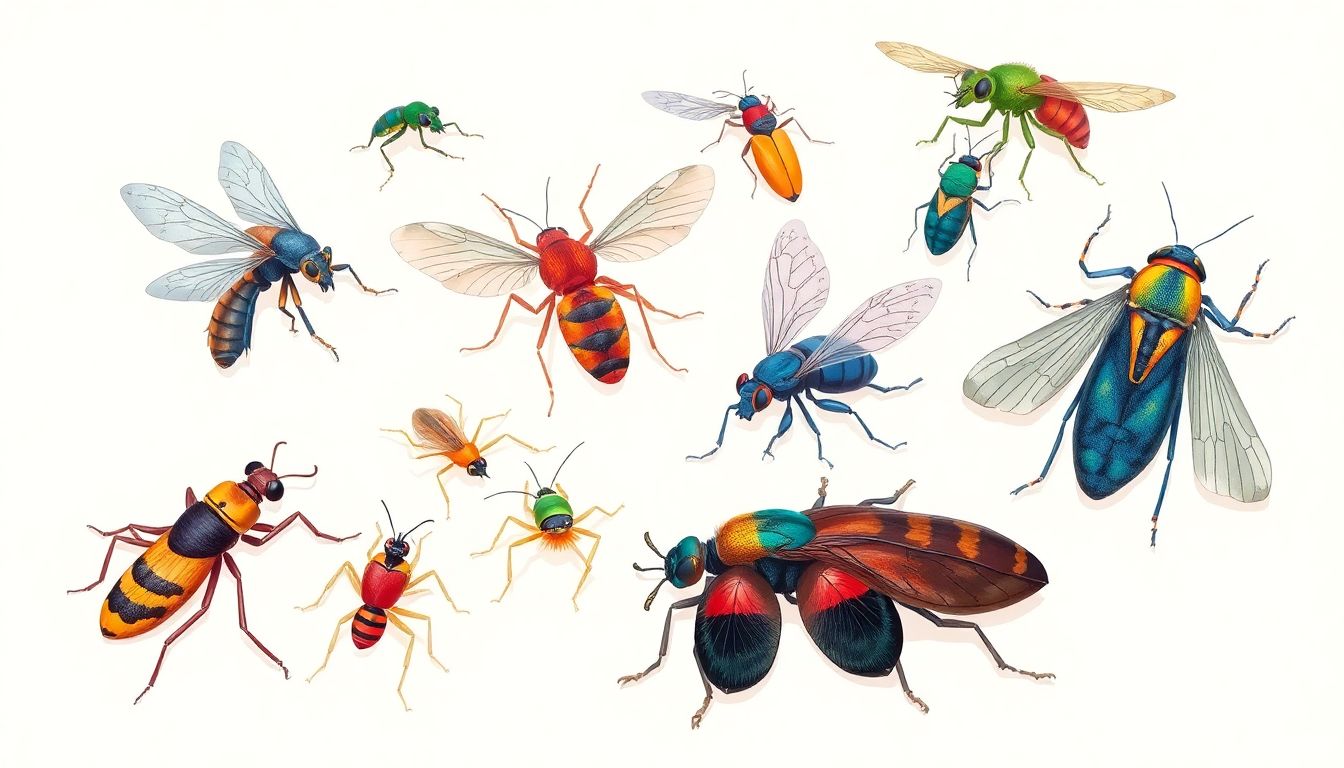
Did you know that insects make up about 80% of all known animal species? They're all around us, but we often overlook them. These tiny creatures play a huge role in our world. Get ready to have your mind blown! Here are 10 surprising facts about insects that will change how you see them.
Insects Outnumber Humans by a Staggering Amount
Insects are everywhere! Their numbers are truly mind-boggling. It's estimated that there are around 10 quintillion insects alive at any given time. That's billions of times more than people.
Estimated Insect Population Figures
To put it in perspective, there are roughly 8 billion people on Earth. For every one of us, there are millions of insects buzzing, crawling, and hopping around. These numbers highlight the insect world's scale. It will make you think twice during the summer!
Reasons for Insect Abundance
Why are there so many bugs? Several factors help explain this. Insects reproduce quickly. Many have short life cycles. They adapt easily to different environments too. Their small size helps them thrive.
Impact of Insect Abundance on Ecosystems
Insects may be small, but their impact is huge. They serve as food for larger animals. They help pollinate plants. Some even decompose waste. Ecosystems rely on them. They keep the world in balance.
Insects Have Been Around Longer Than Dinosaurs
Insects have a long history. These creatures roamed the Earth long before dinosaurs. They have been around for over 400 million years. That's longer than almost any other animal group.
Fossil Evidence of Early Insects
Scientists have found insect fossils dating back to the Devonian period. These fossils show that insects were among the first animals to live on land. These early insects were wingless and simple. The fossils tell an important story.
Insect Survival Through Major Extinction Events
Insects have survived many mass extinctions. These events wiped out many other species. Somehow, they managed to adapt and keep going. This resilience shows how tough these creatures are. They are survivors!
Evolutionary Adaptations Over Millions of Years
Over millions of years, insects developed wings and other new tricks. Metamorphosis allowed them to change their body shape. Some insects even developed complex social lives. These adaptations helped them survive and thrive.
Some Insects Can Lift Objects Many Times Their Weight
Insects may be small, but they are mighty. Some insects can lift objects many times their own weight. This is like a human lifting a car!
Examples of Insects with Exceptional Lifting Abilities
Ants are famous for their strength. Some ants can lift 50 times their own weight. Dung beetles are even stronger. They can pull over 1,000 times their weight. Imagine doing that!
Biological Mechanisms Behind Their Strength
How do they do it? Insect muscles are very efficient. Their exoskeleton provides support. Simple leverage principles also help. It's a combination of biology and physics.
Practical Applications of Insect Strength in Engineering
Engineers study insect strength for ideas. Biomimicry is using nature to design things. Insect strength could inspire new robots and machines. Nature is a great teacher.
Insects Play a Vital Role in Pollination
Pollination is key for growing food. Insects play a big role in this process. They move pollen from one flower to another.
Types of Insects Involved in Pollination
Bees are the most famous pollinators. Butterflies, moths, flies, and beetles also help. They all visit flowers for food. They unknowingly spread pollen.
Impact of Insect Pollination on Food Production
Insect pollination is essential for many crops. It helps produce fruits, vegetables, and nuts. Without insects, our food supply would suffer. They help us eat.
Threats to Insect Pollinators and Their Consequences
Sadly, insect pollinators are in danger. Pesticide use and habitat loss hurt them. Climate change also poses a threat. If we lose pollinators, our food supply could collapse. It is very important to protect these important creatures!
Insects Can Communicate in Surprising Ways
Insects talk to each other. They don't use words like us. Instead, they use other methods to communicate.
Pheromone Communication
Pheromones are chemical signals. Insects use them to attract mates. They mark trails with them. Pheromones can also signal danger. It's like sending messages through the air.
Visual Communication
Some insects use colors and patterns to talk. Fireflies use light to attract mates. Butterflies have colorful wings for communication. It's like a secret language of colors.
Sound Communication
Crickets chirp to attract mates. Bees buzz to communicate in the hive. Grasshoppers make sounds by rubbing their legs together. Sound is a key part of insect language.
Some Insects Undergo Complete Metamorphosis
Some insects change dramatically as they grow. This is called complete metamorphosis. They go through several stages.
Stages of Complete Metamorphosis
The process starts with an egg. Then comes the larva stage. This is followed by the pupa stage. Finally, the insect becomes an adult. Each stage is different.
Examples of Insects That Undergo Complete Metamorphosis
Butterflies are a classic example. Moths, beetles, and flies also go through this process. They change shape and form completely. It's like magic!
Advantages of Complete Metamorphosis
Complete metamorphosis has advantages. Larvae and adults don't compete for food. Each stage can specialize in a different task. This helps them survive.
Conclusion
Insects are truly amazing creatures. From their staggering numbers to their pollination skills, they play an important role in our world. We covered 10 incredible facts, and hopefully it gave you a new respect for the bugs we see everyday.
So, next time you see an insect, take a moment to appreciate it. Learn more about these tiny creatures. You might be surprised by what you discover. The world of insects is fascinating and important!











0 Comments